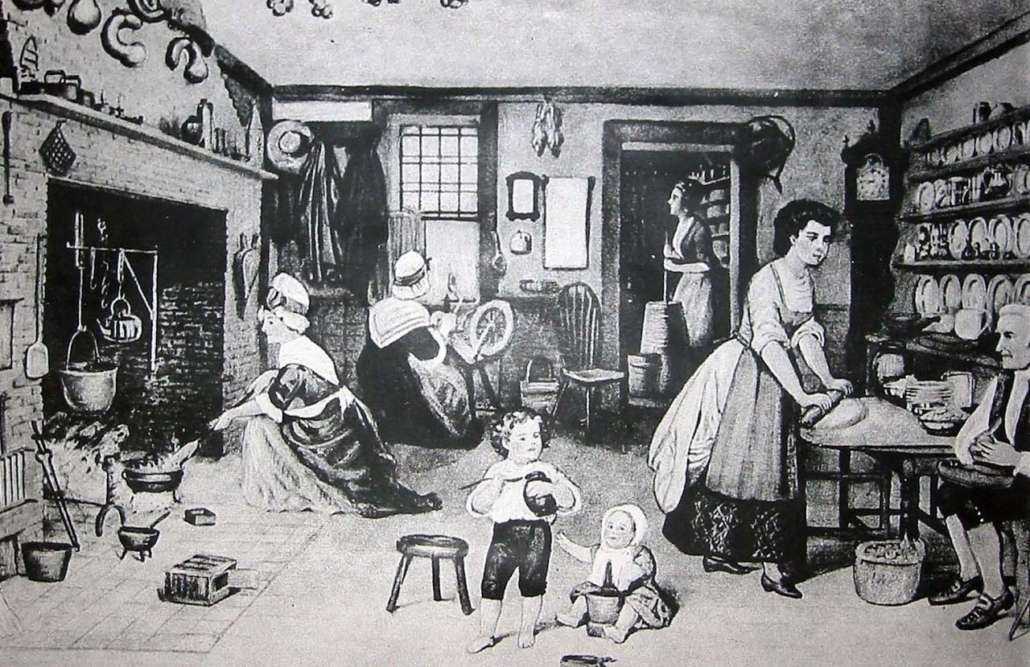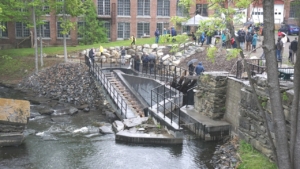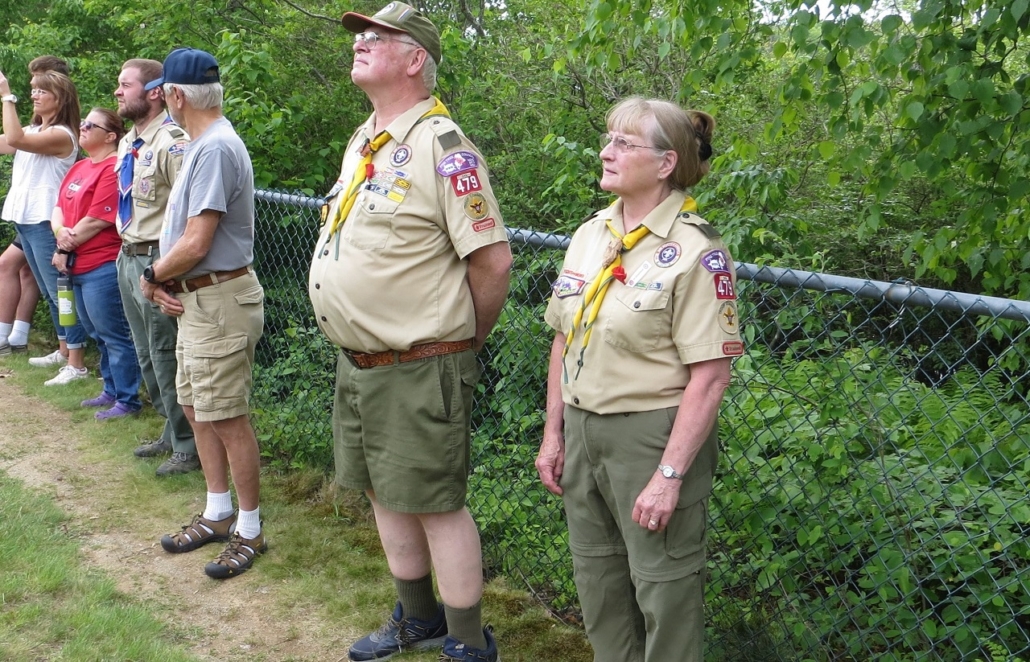
Top row, left to right: Mackenzie Roderick, Aidan Larrabee, Hannah Soule, Lily Vinci, Samantha Golden.
Bottom row: Emily Clark, Grace Hodgkins, Devon Polley, Grace Kelso, Riley Reitchel.
Erskine Academy, in South China, has announced the Class of 2022 Top Ten Seniors.
Valedictorian is Mackenzie Roderick, daughter of Melissa Vail, of Augusta, and Mike Roderick, of China. Throughout her four years at Erskine, Mackenzie has participated in such activities as Student Council, National Honor Society, the EA Leadership Team, math team, soccer, basketball, and she has completed over 100 hours of community service projects. Mackenzie is a four-year honor roll recipient and has received awards of distinction in Spanish, statistics, and calculus, and she has been a Senior of the Trimester award recipient. Mackenzie is also a Maine Principal’s Association Award recipient, a George Eastman Young Leaders Award recipient, and has served as President of the Class of 2022. Mackenzie plans to attend the University of Southern Maine to study Biology.
Salutatorian is Aidan Larrabee, son of Carrie and Jeremy Larrabee, of China. Aidan has participated in such activities as Student Council, National Honor Society, math team, Youth in Government, the EA Leadership Team, Future Business Leaders of America, soccer, wrestling, and basketball. Aidan has also served as Vice President of the Class of 2022, and he has completed over 200 hours of community service projects. A student who has received high honor roll distinction every trimester, Aidan was the recipient of awards of excellence in English, pre-calculus, social studies, biology, U.S. History, French, and physical education. In addition, Aidan has also been a recipient of the Rensselaer Medal and Renaissance Recognition and Senior of the Trimester awards. Aidan plans to attend Texas A & M to study Petroleum Engineering.
Third in academic standing is Hannah Soule, daughter of Amanda and Jamie Soule, of Fairfield. Hannah is a member of National Honor Society and she has participated in such activities as EA Theater, Future Business Leaders of America, AFS (Erskine’s cultural awareness group), LEO Club, the EA Leadership Team, and field hockey. In addition, Hannah has completed over 100 hours of community service projects. Hannah has received high honor roll distinction every trimester, is a Smith Book Award recipient, and has been a recipient of Renaissance Recognition and Senior of the Trimester awards. Hannah plans to attend Columbus State University to major in Political Science with a Pre-Law concentration.
Fourth in academic standing is Lily Vinci, daughter of Melody and Anthony Vinci, of Palermo. Lily has participated in such activities as AFS (Erskine’s cultural awareness group), cross country, indoor track, track & field, and tennis. Lily has also completed over 100 hours of community service projects. Lily has received awards of distinction in Algebra 1, geometry, Algebra 2, and chemistry, and she has achieved four year honor roll status. In addition, Lily was the recipient of the Phi Beta Kappa Award. Lily plans to take a gap year to pursue employment and travel opportunities.
Fifth in academic standing is Samantha Golden, daughter of Jane and Richard Golden, of China. Samantha is a member of National Honor Society and has been a participant of HOPE (Helping Others Persevere at Erskine), soccer, and basketball. Samantha has also completed over 100 hours of community service projects. Samantha has received awards of excellence in U.S. history and is a four-year honor roll recipient. Samantha plans to attend Clark University with a major in Biology.
Sixth in academic standing is Emily Clark, daughter of Stacy and Christopher Clark, of China. Emily is a member of National Honor Society and she has participated in such activities as HOPE (Helping Others Persevere at Erskine), soccer, basketball, and she has participated in a variety of community service activities. Emily has received awards of excellence in Integrated Science and PreCalculus, is a four year honor roll recipient, and received the SWE Certification of Merit. Emily plans to attend Endicott College with a major in nursing.
Seventh in academic standing is Grace Hodgkin, daughter of Helen Edmonds and Dana Hodgkin, of Manchester. Grace is a member of National Honor Society and she has participated in such activities as EA Theater, Student Council, yearbook, tennis, and she has served as a class officer. Grace is also a four-year honor roll recipient. Grace plans to major in biology at the University of Maine.
Eighth in academic standing is Devon Polley, son of Hillary and Stephen Polley, of Vassalboro. Devon has been a member of the soccer and tennis teams and he has completed a variety of community service projects. Devon has received honor roll distinction every trimester, and he has received an award of excellence in physics. Devon was also the recipient of the Bausch & Lomb Honorary Science Award. Devon plans to attend the University of Maine with a major in Mechanical Engineering.
Ninth in academic standing is Grace Kelso, daughter of Storm and Bradley Kelso, of Vassalboro. Grace is a member of National Honor Society, and she has participated in such activities as debate team, Youth in Government, AFS (Erskine’s cultural awareness group), swim, tennis, and she has completed over 300 hours of community service projects. Grace has also received high honor roll distinction every trimester, has received awards of excellence in English, German, and debate, and she has received Renaissance Recognition and Senior of the Trimester awards. Grace plans to major in International Relations at the University of Edinburgh.
Tenth in academic standing is Riley Reitchel, daughter of Danielle and Richard Reitchel, of Palermo. Riley is a member of National Honor Society and has participated in such activities as LEO Club, the EA Leadership Team, the EA International Outreach Coalition, soccer, indoor track, and she has completed over 100 hours of community service projects. Riley has earned honor roll status every trimester, and she has received a Renaissance Senior of the Trimester award. Riley plans to major in Linguistics at the University of Southern Maine.
 Spectrum Generations is offering an evidence-based class, “Savvy Caregiver,” via Zoom, Tuesdays 6:30 to 8:30 a.m., from July 19 to August 23.
Spectrum Generations is offering an evidence-based class, “Savvy Caregiver,” via Zoom, Tuesdays 6:30 to 8:30 a.m., from July 19 to August 23.




 On Saturday, June 11, from 8 a.m. – 1 p.m., Aspen Dental locations nationwide will open their doors to provide free care to military veterans across the country.
On Saturday, June 11, from 8 a.m. – 1 p.m., Aspen Dental locations nationwide will open their doors to provide free care to military veterans across the country.







